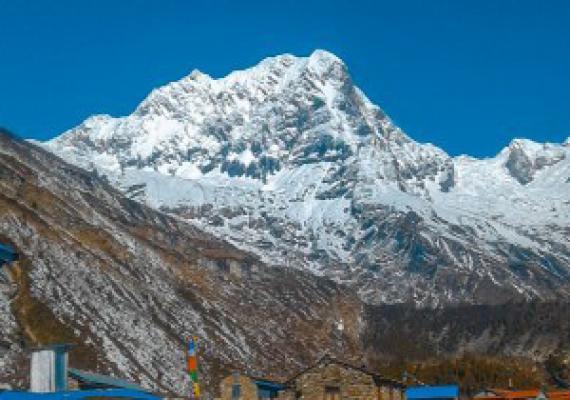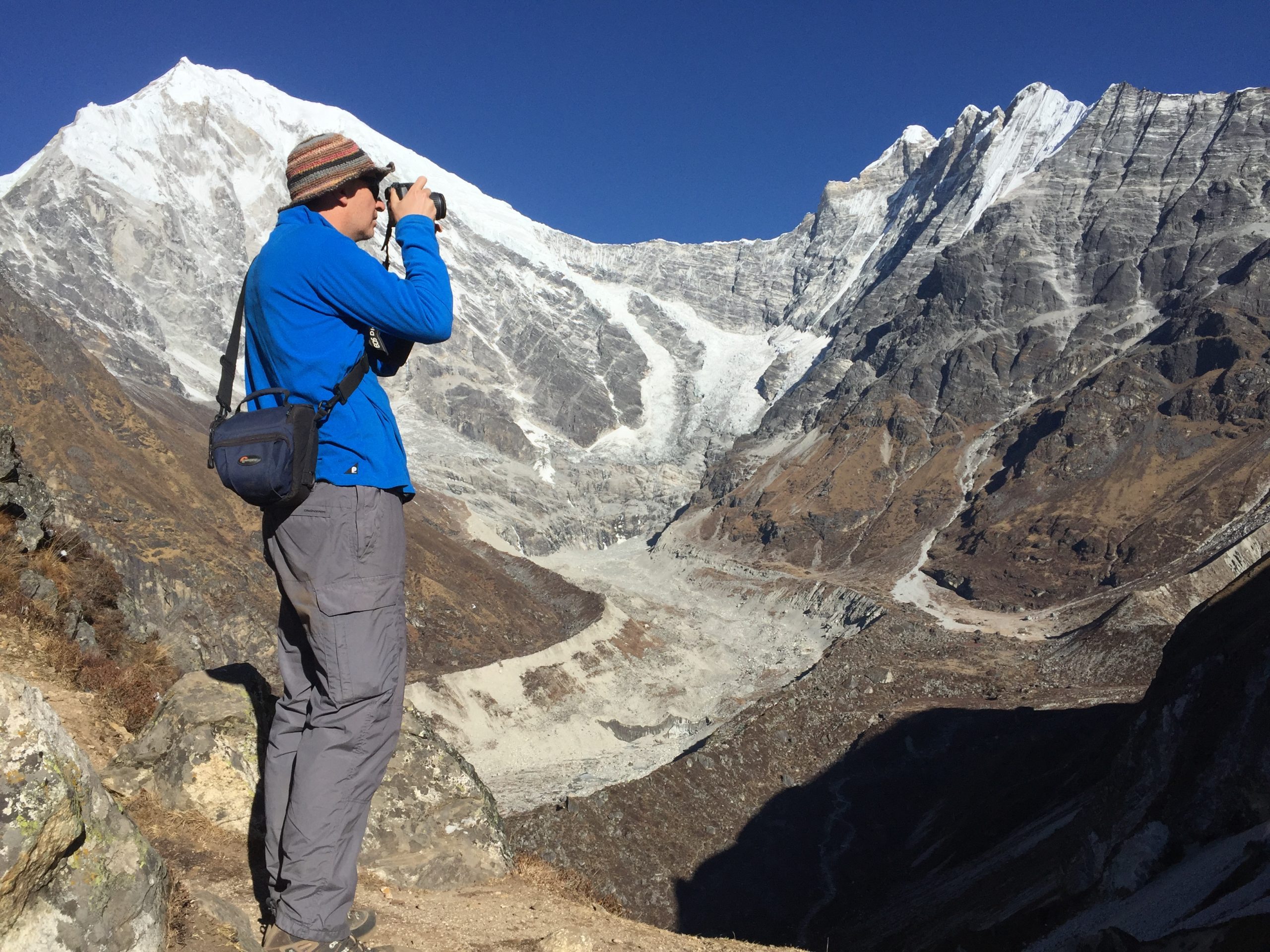15 Best Trekking Trails in Nepal with a variety of trekking routes that highlight the breathtaking natural beauty of the Himalayan region, Nepal is one of the best trekking destinations in the world. Trekking in Nepal has become a popular activity for tourists from all over the world and is a fantastic way to see both the country’s rich natural heritage and its many different cultures and traditions.
Nepal offers a wide variety of trekking routes, from quick and simple walks to difficult high-altitude treks that demand a high level of physical fitness and climbing expertise. The Everest Base Camp Trek, Annapurna Circuit Trek, Langtang Valley Trek, Upper Mustang Trek, and Manaslu Circuit Trek are a few of the best known trekking routes in Nepal.
Trekking in Nepal gives visitors a chance to interact with the locals, who are renowned for their friendliness and hospitality in addition to the country’s breathtaking natural scenery and array of various cultures and traditions. In Nepal, it is easy to find trekking guides and porters, who are an essential component of the trekking experience and a source of local knowledge.
To have a safe and happy experience while trekking in Nepal, it is crucial to adopt the appropriate safety measures. This includes acclimatizing properly to high elevations, drinking plenty of water, packing the right equipment and supplies, and being informed of the local weather and conditions.
15 Best Trekking Trails in Nepal (Regional)
Manaslu Region
The Manaslu region of Nepal is a distant and largely unexplored place with amazing natural beauty that offers one-of-a-kind trekking experience. Because of the Mount Manaslu The region is named Manaslu Region. The Manaslu (Soul Mountain) also known as Kutang Himal, is one of the 8th highest mountains in the world situated in the west-center part of Nepal between two beautiful mountains Annapurna and Ganesh Himal, standing with its 8,163 meters high from sea level.
Manaslu Circuit Trek is the best all-round trekking in Nepal, which is newly raised and getting popular among the adventure lover people day by day, which was officially opened at 1991 specially for trekking, since then that allowing to organize trekking group into the Manaslu Region and that requires special permits to gain entry into this region because Manaslu Region is Restricted region.
In Manaslu Region There are several Trekking routes in a unique off-the-beaten-path with a soak in breathtaking views of over 8000-meter mountains. Gushing waterfalls, high altitude lakes, colorful prayer flags, and ever-changing spectacular landscapes to immerse in the peaceful fusion of Nepalese and Tibetan culture as trekkers pass through friendly villages and visit secluded Buddhist monasteries tucked away in the valley carved out by glaciers.
Some Popular Trekking Routes in Manaslu Region
- Manaslu Circuit Trek -15 Days (Fusion of Nature and Culture)
- Remarkable Journey to Lower Manaslu Trek -12 Days
- Exquisite Rupinala Pass Trek -14 Days
- Classic Manaslu Circuit Trek – 15 Days
Tsum Valley – The Hidden Gems
In Manaslu Region, there is another isolated beautiful valley called Tsum Valley, known for its natural beauty, Tibetan culture, and sacred sites, has been open to trekkers since 2008, requiring a special permit. sum Valley, a hidden gem, offers a unique blend of natural beauty and Tibetan-influenced traditions, providing a memorable trekking experience in the Himalayan wilderness.
Tsum Valley, surrounded by rugged mountains, is a culturally significant area with a strong Buddhist heritage. It is home to numerous monasteries, chortens, and mani walls, reflecting the region’s strong Buddhist heritage. Tsum Valley has gained popularity as a trekking destination, offering stunning views and immersing visitors in local culture. Permits for trekking in Tsum Valley require a restricted area permit and Manaslu Conservation Area Permit, and accommodation options are basic, with teahouses and lodges in some villages.
Some Popular Trekking Routes Combined in Manaslu and Tsum Valley Region
- Tsum Valley Manaslu Trek Start By Helicopter -12 Days
- The Hidden Gem- Tsum Valley Trek – 17 Days
- Magnificent Tsum Valley-Manaslu Trek
- Classified Manaslu Three passes Trek- 32 Days
We at Touch The Himalaya Treks and Expedition, Running with a team of Guides, who are locally from the Manaslu region having long years of experience in trekking around Manaslu, know every corner of the region and will provide excellent guiding and hospitality service to our clients.
Trekking in Everest Region
The Everest region is located in Sagarmatha National Park in the northeast of Nepal. Trekking through the middle hills of Solukhumbu into the higher altitudes of Khumbu and to the base of Mt. Everest (Sagarmatha in Nepalese) provides an opportunity to observe and participate in the daily life of the legendary Sherpa people.
The prime attraction however is Mt Everest itself standing at a height of 8848m and the national park is also home to two other eight thousands – Lhotse and Cho Yu – as well as several other prominent peaks above 6000m. Designated as a World Heritage Site in 1979, much of the 1148 sq. km national park lies above 3000m. The park is composed of rugged terrain with deep gorges, glaciers and huge rocks.
The vegetation in the park changes from pine, hemlock, fir, juniper, birch, rhododendron and shrubs to alpine plants and then to bare rock and snow. It is home to the ghoral, tahr, serow and musk deer as well as the impawn pheasant, blood pheasant, red-billed chough and the yellow-billed chough. The trail to Everest commonly begins at Lukla and its airport at 2850 m. The trail climbs up the Dudhkoshi River Valley, and the following day brings you to the legendary Sherpa village of Namche Bazaar in the Khumbu (3,500 m), which is the staging point for expeditions to Everest and other peaks in the area. Above Namche lie the traditional villages of Khunde and Khumjung.
Khumjung which is the largest village in the Khumbu lies at the foot of the sacred peak Khumbila. The Khunde Hospital, maintained by Himalayan Trust, and Khumjung School, the original Hillary School set up in 1960, lie here. Across the canyon from Khunde, perched on a high ridge, is Tengboche Monastery, the leading Buddhist center in Khumbu. The monastery rests amid stunning views of Everest, Lhotse, and Ama Dablam. Pines, azaleas, and colorful mountain rhododendrons ring the attractive monastery.
There are rest houses, lodges, and camping sites here. From Tengboche, you can continue on to Pheriche, Kalapaththar, and the hamlet of Gorak Shep. From here, the site of Everest Base Camp is easily accessible, as is the summit of Kalapaththar (5,545 m), from which much of Mt. Everest is clearly visible. However, when trekking in this region, you must take time to properly acclimatize as the altitude gains are rapid.
- EVEREST BASE CAMP TREK
- GOKYO LAKE TREK
- STUNNING RENJO-LA PASS TREK
- EBC CHOLA PASS GOKYO TREK -17 DAYS
- EVEREST PANORAMA TREK -10 DAYS
ANNAPURNA REGION Region TREKKING
The diverse terrain and variety of cultures of the region north of Pokhara make each days walk a different experience and make the area the most popular destination in the country. Four favorite treks, each with a minimum of about one week and a maximum of three-week treks, to the Kali-Gandaki basin include the Manang region, the Annapurna range, Jomsom, and the Annapurna Sanctuary. Alpine meadows, moraines, glaciers, and breathtaking views of the Annapurna range abound. The three-hundred kilometer Annapurna Circuit combines the first two areas by crossing a high altitude pass, Manang Thorang-La (5416 meters), and takes up to three weeks to complete.
Annapurna Circuit Trek
The Annapurna Circuit Trek is known as one of Nepal’s most famous, largest, and best trekking routes. You pass through a variety of landscapes during the trek, including subtropical forests that are lush, alpine meadows, and areas that resemble the desert. The journey begins in the subtropical lowlands and ascends to Mustang’s high-altitude desert, passing across the renowned Thorong La Pass (5,416 m/17,769 ft). For beginner and experienced hikers alike, the Annapurna Circuit is a once-in-a-lifetime adventure.
Trip info
Trip Day: 14-21 Days, depending on your itinerary and pace.
Max-Elevation: Annapurna circuit Trek (5,416m)
Best Season: Spring (mar-may) and autumn (Sep-Dec)
Group Size:1-12+people
Accommodation: Hotels & Tea houses/Lodge during the trek
Meals: Breakfast, Lunch, and Dinner
Transportation: Bus/Hiace/Jeep

Highlights: The Annapurna Circuit Trek offers breathtaking views of some of the world’s highest peaks, including Manaslu (8,163 m/26,781 ft), Dhaulagiri (8,167 m/26,795 ft), and Annapurna (8,091 m/26,545 ft). Also, you will travel through a variety of landscapes, including dry deserts, high-altitude glaciers, and lush subtropical forests and terraced rice fields. You will come across a variety of cultures and customs along the journey, including Gurung and Tibetan communities as well as Hindu and Buddhist villages.
Itinerary: Besishahar, a town about 185 kilometers from Kathmandu, is the traditional starting point for the Annapurna Circuit Trek. Following the Marsyangdi River valley, the trip passes through harming towns like Chamje, Dharapani, and Chame. You will next visit the Manang district, which is renowned for its vibrant Tibetan culture and breathtaking views of the Annapurna range.
The Thorong La Pass, the highest point of the route, is reached by ascending from Manang. Following the pass, you will descend to the revered city of Muktinath and then proceed to the Kali Gandaki valley, which is renowned for having the deepest gorge in the entire globe. The journey comes to a close in Jomsom, where you may catch a flight back to Pokhara or Kathmandu. See Annapurna Circuit Trek for more information.
The path passes through Nepal’s Western Annapurna Conservation Area. For the route, hikers must have a TIMS card and an Annapurna permit, both of which may be purchased for NPR 5000 (about US$45) from the tourism offices in Pokhara and Kathmandu.
Accommodations: There are many different lodging alternatives along the Annapurna Circuit Trek, ranging from luxuriant lodges to simple teahouses. While luxury lodges offer cozy rooms and deluxe facilities, teahouses offer basic lodging and meals.
2. Annapurna Base Camp
One of the most popular treks in Nepal is the ABC Trek, also referred to as the Annapurna Base Camp Trek. It takes trekkers on a journey across Nepal’s gorgeous Annapurna region, offering breathtaking views of the country’s snow-capped mountains, lush forests, and charming villages.
The journey begins in Nayapul and travels through a number of towns, including Ghandruk, Chomrong, and Bamboo, before arriving at the 4,130-meter-high Annapurna Base Camp. Hiunchuli, Annapurna South, Mount Machhapuchhre (Fishtail), and other peaks can all be seen in stunning detail from the trail. Depending on the starting and ending points, the Annapurna Base Camp Trek typically lasts 10 to 14 days and demands a moderate level of fitness. To prevent altitude sickness, trekkers are recommended to take their time and adjust to the high altitude correctly.
For those seeking a shorter journey in Nepal that still provides breathtaking mountain views and cultural experiences, the ABC Trek is a fantastic choice. Trekkers can gain knowledge about the Gurung and Magar peoples regional culture and traditions along the trip. Trekking enthusiasts will have a one-of-a-kind and amazing experience with ABC Trek, a fantastic adventure.
Some Highlights:
The trek normally takes 10–14 days to complete, covering a round-trip distance of about 115 kilometers (71 miles).
At an elevation of 4,130 meters (13,550 feet), the Annapurna Base Camp is the highest point on the trek.
Trekkers pass through charming Nepalese towns, lush forests, and terraced fields along the route.
Panoramic views of the Annapurna range, including Annapurna South, Annapurna I, Machhapuchhre (Fishtail), and Hiunchuli, are among the trek’s highlights.
The Modi Khola river, the charming village of Chomrong, and the Jhinu Danda natural hot springs are further notable attractions.
Most persons with a modest level of fitness may complete the journey, and no prior trekking experience is required.
Throughout the trek, lodging is frequently found at tea houses, which are simple lodges that offer lodging and meals.
When the weather is moderate and the skies are clear, between September and November and March and May are the ideal times to complete the Annapurna Base Camp journey.
3. Everest Base Camp Trek
A well-liked hiking route in Nepal’s Khumbu region, the Everest Base Camp trek is renowned for its breathtaking mountain views, Sherpa culture, and difficult terrain.
The journey is normally completed in 12–16 days and covers a round-trip distance of about 130 kilometers (81 miles).
The Kala Patthar viewpoint, located at an elevation of 5,545 meters (18,192 feet), is the highest point on the walk and provides breathtaking panoramic views of Mount Everest and the nearby peaks.
Trekkers pass through Sherpa villages, Buddhist monasteries, and challenging mountain terrain on their journey.
Views of Mount Everest, Lhotse, Nuptse, Ama Dablam, and other majestic Himalayan peaks are among the trek’s highlights.
The Khumbu Icefall, Tengboche Monastery, and the lovely Dudh Koshi River Valley are additional notable attractions.
Because of the high altitude, difficult ascents and descents, and changeable weather, the journey is regarded as difficult.
Throughout the trek, lodging is frequently found at tea houses, which are simple lodges that offer lodging and meals.
When the weather is moderate and the skies are clear, between March and May and September and November are the ideal times to complete the Everest Base Camp journey.








